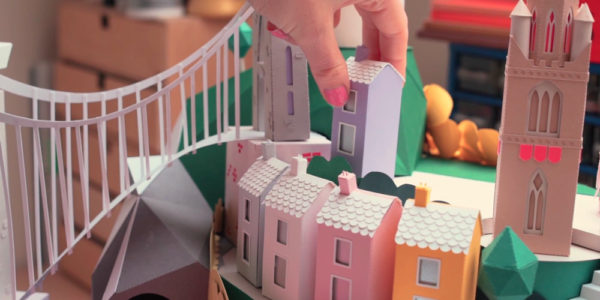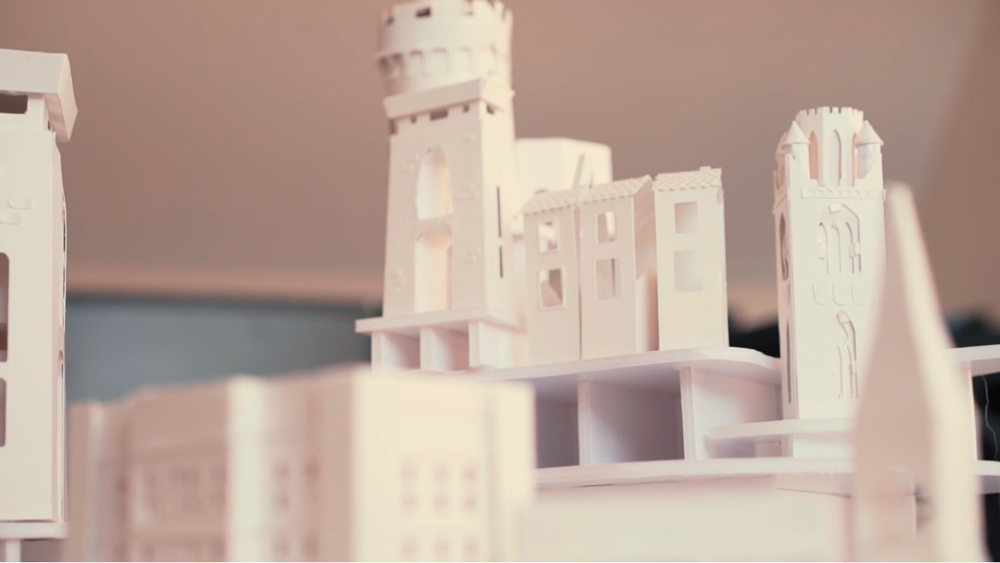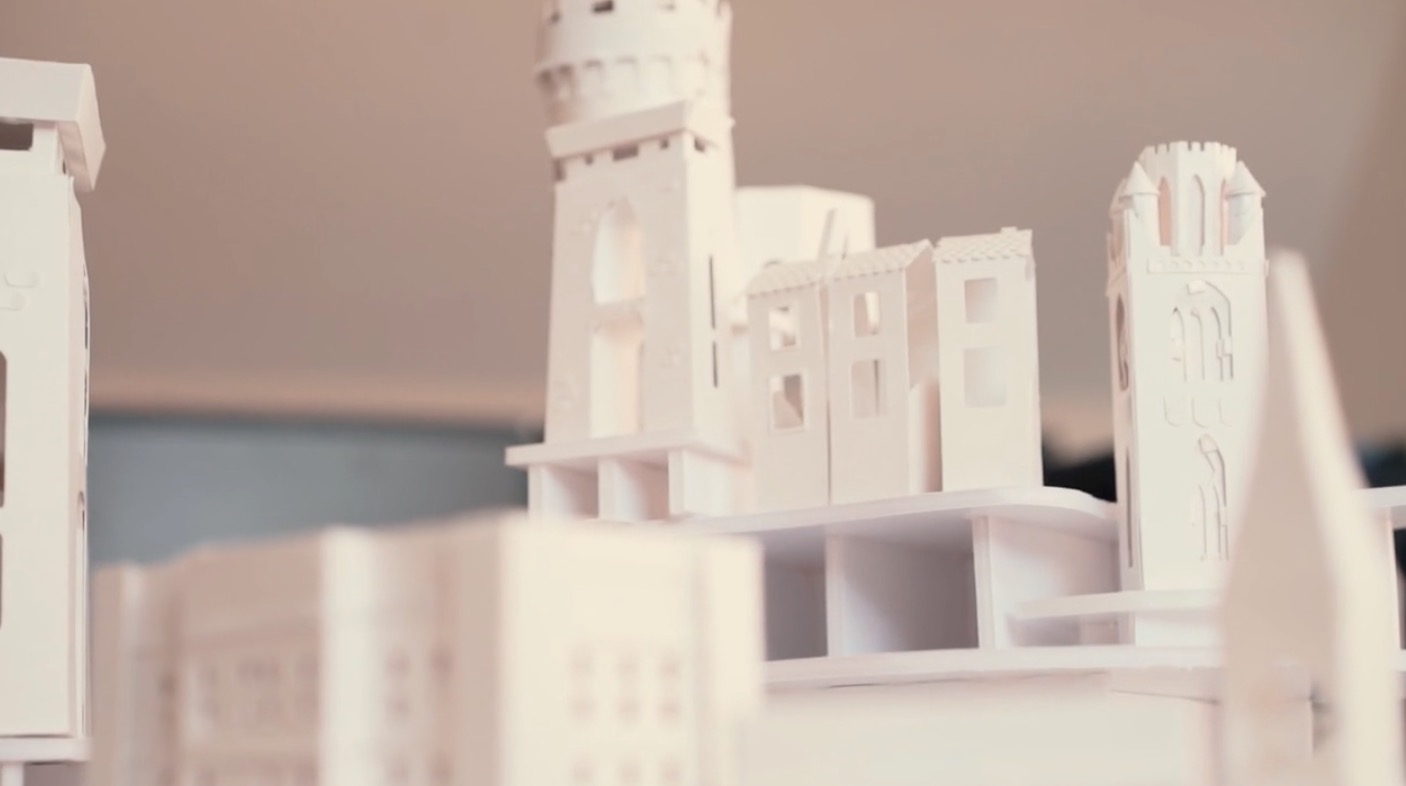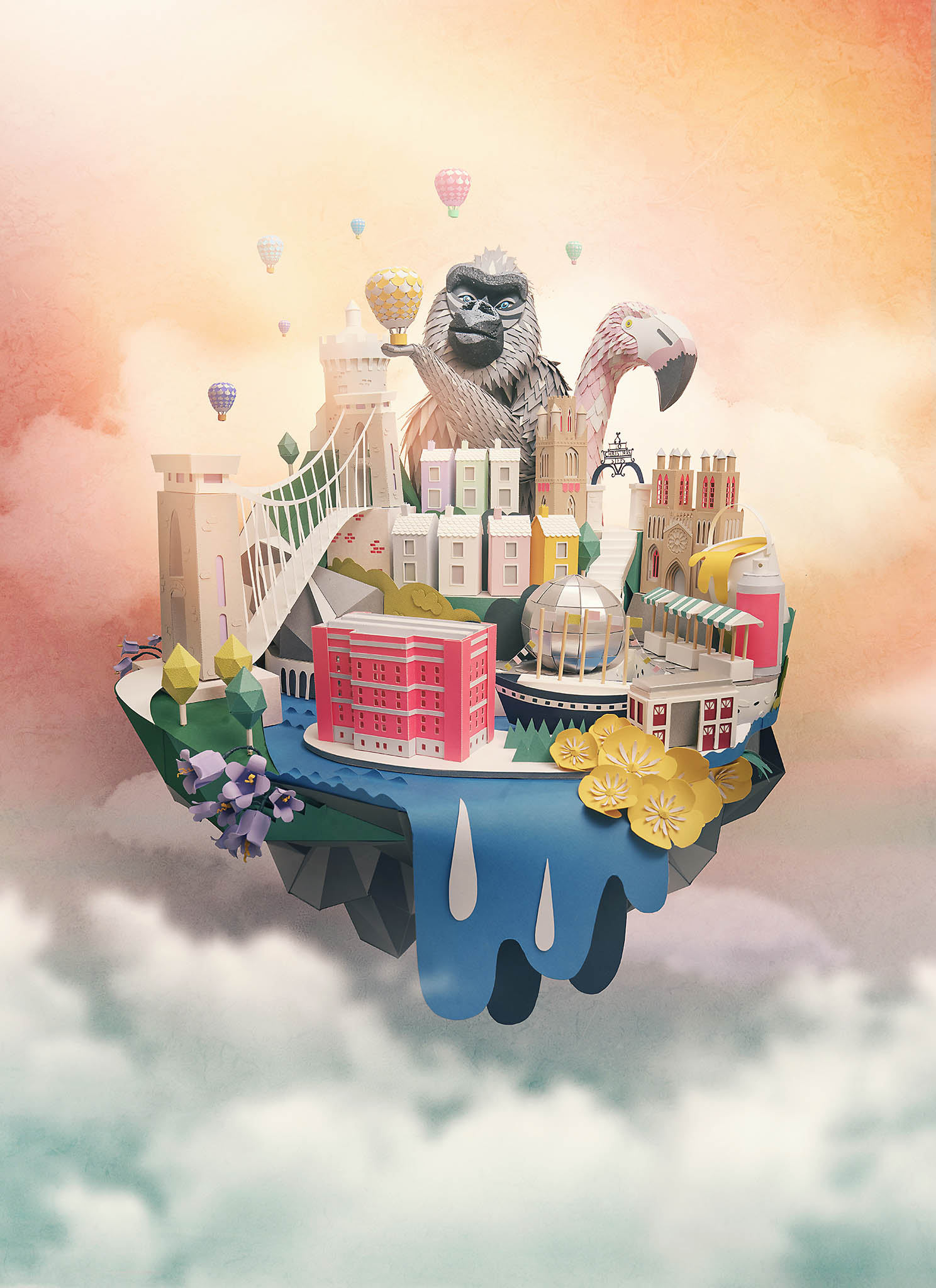In-Focus: Sam Pierpoint reveals her creative process for ‘Paper Bristol’

Taking inspiration from the world around her, illustrator Sam Pierpoint lives and works in the rural surroundings of the Mendip Hills, near Bristol.
Handcrafting all her creations with fine quality paper, Sam Pierpoint‘s dreamy artworks have been used both commercially and artistically, for a variety of ad campaigns, magazine covers, editorials, installations, packaging and window displays.
Sam recently completed work on Paper Bristol, an elaborate, colourful paper sculpture, depicting some of Bristol’s best known landmarks. Painstakingly constructed by hand in between client projects, Sam captured the experience on film to share her time-intensive creative process.
In this special ‘In-Focus’ feature, we uncover her design tool-kit, explore her inspirations and hear about touring plans for ‘Paper Bristol.’
Can you talk to us through your latest paper sculpture?
Over the last couple of months I’ve had the pleasure of making Paper Bristol! As a follow-up to Paper London and Paper Bournemouth I created Paper Bristol to celebrate my recent move to the city. It’s the most friendly, creative, freethinking and vibrant place and I wanted to portray this within the sculpture. In the sculpture I’ve added iconic architecture and landscape which makes Bristol – Bristol at the same time keeping a surreal and dreamy feel to the work.
How did you prepare yourself for the project? Did you do much research about specific landmarks in the city?
All of my research for these city sculptures start off with a simple google image search so I can see straight off what the most popular buildings and landmarks are in Bristol then I collate these images together so I can start to visually see what Bristols identity forming. After that just exploring the place on foot with my camera was all the research I needed to make a start on the project. It was a great opportunity to visit the zoo, explore Bristols colourful streets and enjoy views of the Avon Gorge from Clifton Observatory.

We’d love to find out more about the creative process behind the project – do you use any special tools or equipment for these types of artworks?
I always start by planning how I’d like to the sculpture to look – usually just by making a few sketches. Once I’m happy with that I work out all the dimensions and a measured birds eye view of the piece so I know exactly what size everything needs to be. For Paper Bristol I had to make templates for the buildings, and I use a piece of software called Silhouette Studio which is the software for the Silhouette Cameo cutting machine (below).

Everything is either roughly handmade or cut with the Cameo with white scrap card to iron out any mistakes ready for cutting and making in neat. I treat the base ‘landscape’ separate to everything else as this needs more thought on the structure to hold everything in place. This is made with a mix of foam board, glue gun glue and card to cover.


Can you share the technical considerations involved in this type of design i.e, lighting, photography equipment, space etc – what are the basics required to execute this kind of imagery successfully?
My partner Mike does all of my video and photography to I’ll leave him to answer this one! Mike: The lighting setup for this piece ended up being quite simple. I didn’t want to over complicate it with too much contrast or distracting shadows, so we we went for a subtle and even key light with a warm diffused back-light to simulate a setting sun. We actually photographed this piece in the kitchen of our house because it’s large and has a nice clean, white ceiling. In this case, there was always going to be heavy Photoshop work involved, so having a clean infinity curve was not necessary. I had a daylight balanced light unit placed camera right pointing directly upwards and bouncing off the ceiling to simulate a soft, diffused sky.



We created a back-light with a normal desk lamp which was diffused through a scrim positioned behind the work. So a bit of a bodge job you could say(!) but we had all the control that we needed and ended up with a great shot! In terms of the Photoshop work, I used a few differently lit images to produce the backbone layers from which we would work. The first was a fully lit version with the key light and back-light, the second was a back-lit silhouette version from which I created a precise layer mask for the artwork, and then there were also a few layers with selective lighting, such as a slightly harder light on the gorilla’s head to bring out the details in his fur.
Once these layers were in there doing their job, I could start working on the background layer and then compositing environmental details such as clouds, a sunny light source, some colourful flare effects and finally some details in the base of the structure and some hot air balloons. The final touches were some colour adjustments to finish the images off. So the process was quite intensive but the results hopefully justify all of that – we think so anyway!

Your love of colour and dreamlike world’s is evident throughout your portfolio. Who or what are your main inspirations and influences? How important is it for you to escape the studio and immerse yourself in your surroundings to recharge and renew your ideas?
I’m really inspired by weird and wonderful nature! It’s so important to take regular breaks and see different things to keep a healthy mind. I often go for runs around the Mendip Hills with my Italian Greyhound pup – Merlin! We spot lots of wild buzzards, rabbits and deer on the way. It’s great to get a regular fix of nature before I begin a days work and I always come back feeling refreshed and ready to crack on.

Alongside your paper craft works, you’re also an accomplished painter, having been involved with mural commissions and several public art projects with Wild in Art. Do you harbour any ambitions to see your work on a grand scale?
I still love to paint every now and again! The wild in art projects are ideal because it’s a free brief where artists can create pretty much anything. It would be great to do some larger murals in the future!
Do you have a dream project / client?
I’d love to be involved an an ad campaign for a car (large scale!) and it would be amazing to be able to make my paper sculptures move in a stop frame animation of some kind!
The making of Paper Bristol from Sam Pierpoint on Vimeo.
Paper sculpture is a growing trend – what would your advice be for illustrators interested in trying this technique out?
I think the best thing you can do is experiment lots! Explore different shops / paper companies to find good quality paper that you’ll enjoy working with. I am still faced with challenges and when I’m unsure of how to make things and I just roughly cobble something together with scrap card then refine it, pull it apart to get a gist of what the template should look like and refine some more! As for tools – cutting mat, Uhu glue,craft knives, quality paper, precision scissors and some good music to keep you focused.
Any resources / books you recommend looking at?
Paper-cut by Owen Gildersleeve, Elements of pop-up by James Diaz and David A. Carter are the books I found most helpful.
sampierpoint.com























